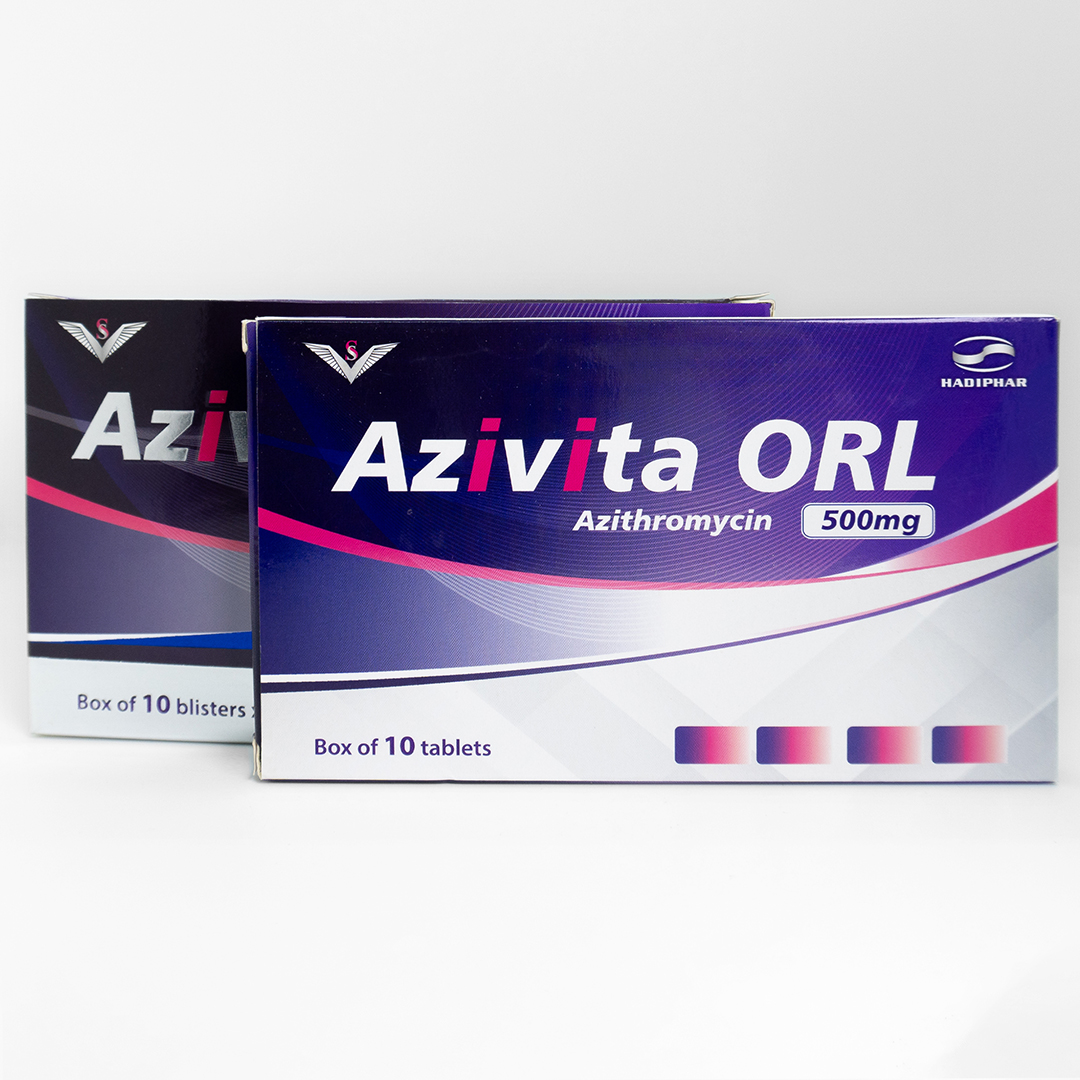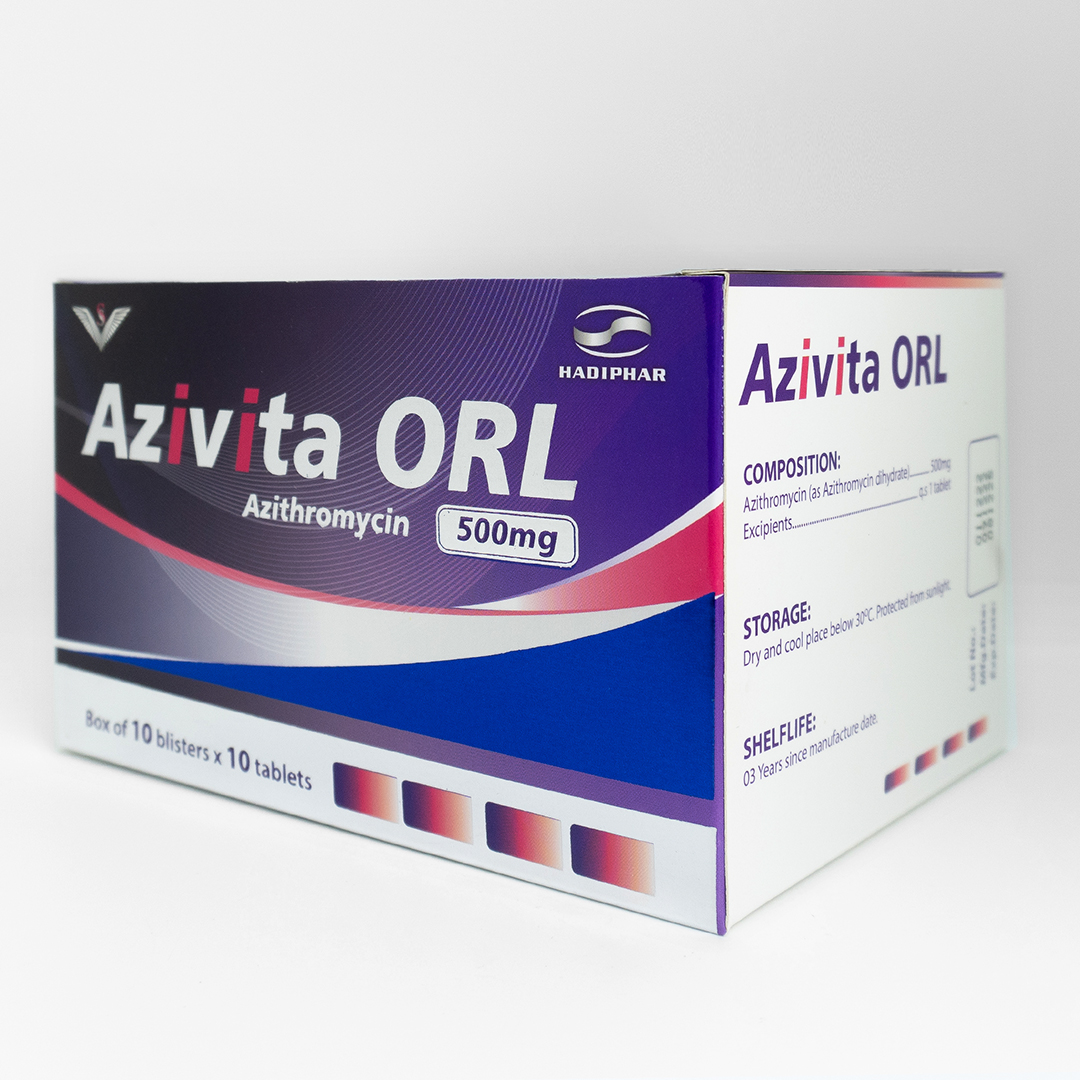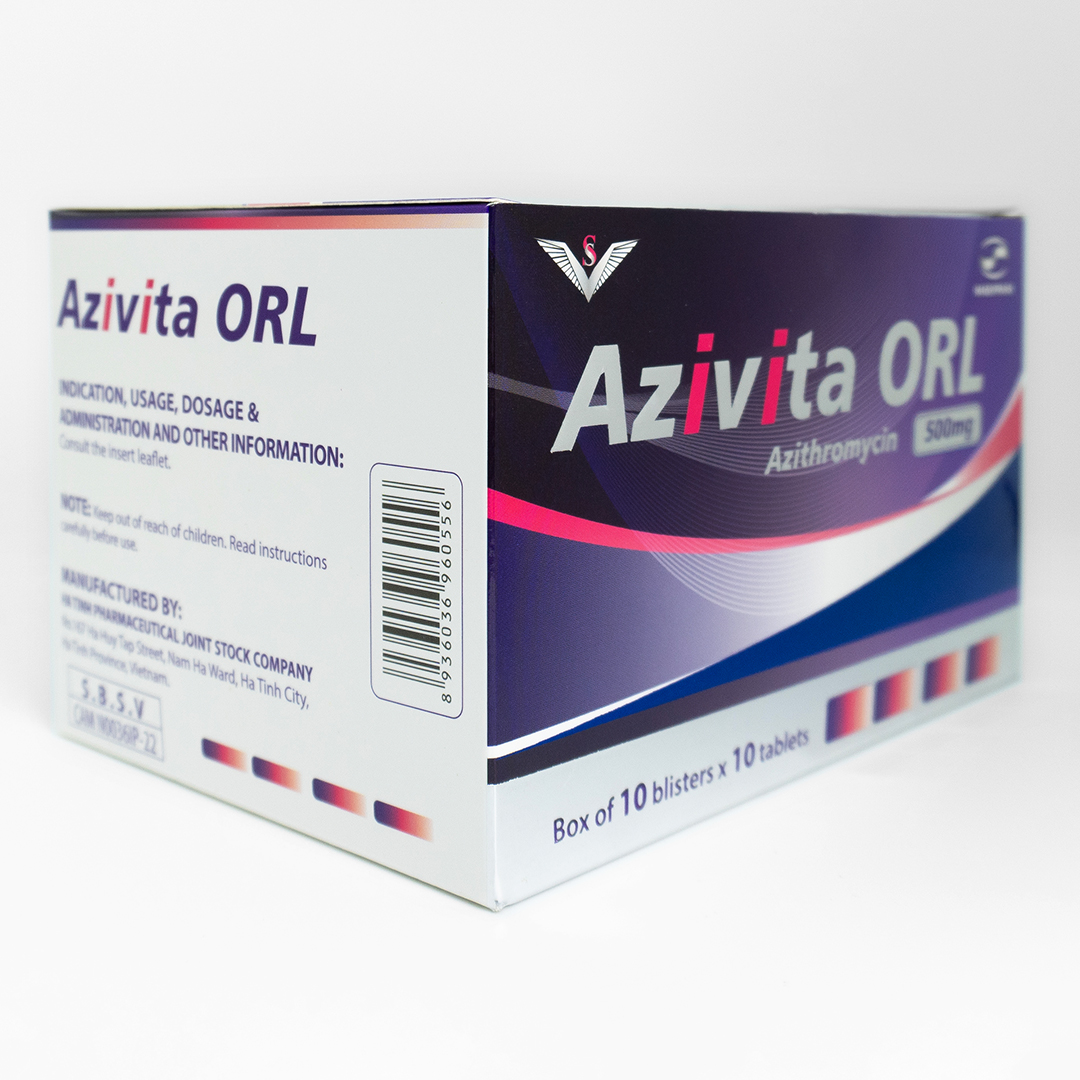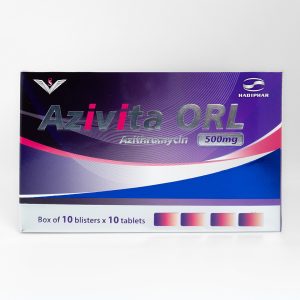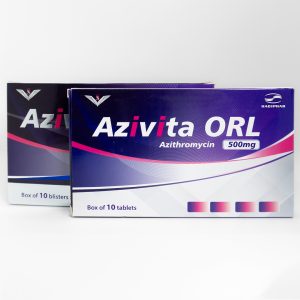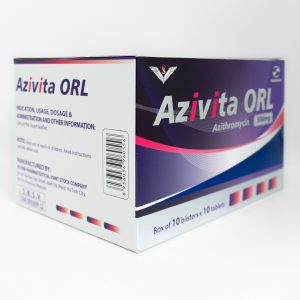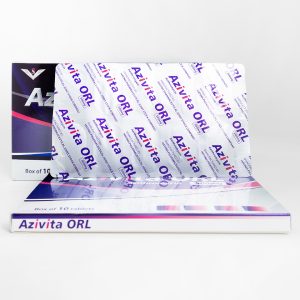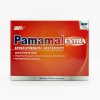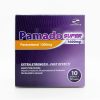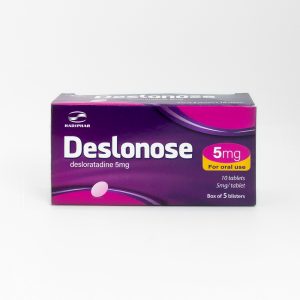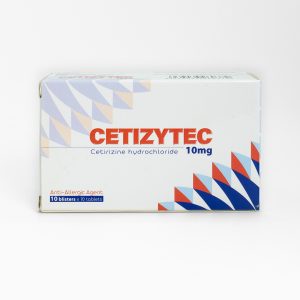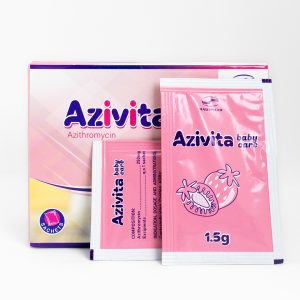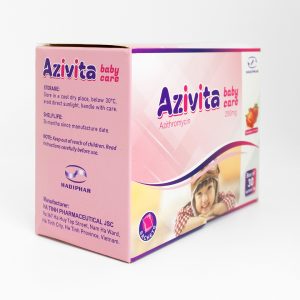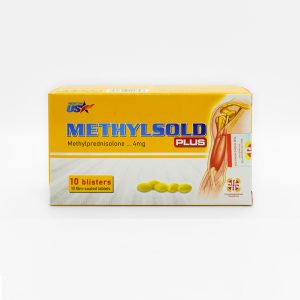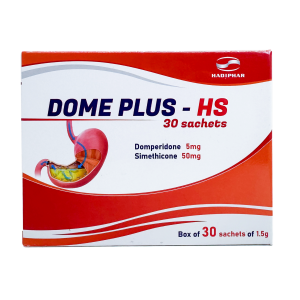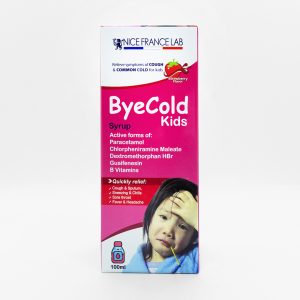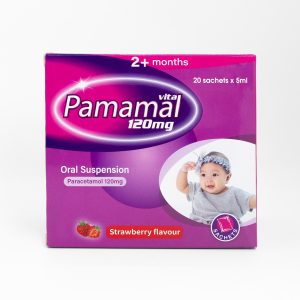INDICATION:
Azithromycin belongs to a group of medicines called macrolide antibiotics. Antibiotics are used to treat infections caused by micro-organisms like bacteria. Azithromycin is used for the treatment of certain infections caused by bacteria that are sensitive to it, such as:
- Chest, throat, or nasal infections (such as bronchitis, pneumonia, tonsillitis, sore throat (pharyngitis), and sinusitis)
- Ear infections
- Skin and soft tissue infections
- Infection of the tube that carries urine from the bladder (urethra) or the neck of the womb (cervix) caused by Chlamydia trachomatis (bacteria)
DOSAGE & ADMINISTRATION:
Dosage:
- For adults and young people with a body weight of 45 kg or over: 500 mg once daily for three days with a total dose of 1500 mg. Alternatively, your doctor may decide to prescribe the total dose of 1500 mg over a period of 5 days, with 500 mg the first day and 250 mg on days 2 to 5.
- For infections of the neck of the womb and urethra caused by Chlamydia trachomatis: One dose of 1000 mg, to be taken one time.
- Children and adolescents under 45 kg: The tablets are not recommended. Young people with a body weight of less than 45 kg should use other forms of this medicine.
- Patients with kidney or liver problems: You should tell your doctor if you have kidney or liver problems as your doctor may need to alter the normal dose.
- Dosage for elderly: The same dosage as for adults applies. The tablet can be divided into equal doses.
Method of administration:
The tablets should be taken with ½ glass of water. The tablets can be taken with or without food.
Usage: Taken orally
Warnings and precautions when using drugs:
Talk with your doctor or pharmacist before taking Azithromycin if:
- You have severe liver or kidney problems
- You have severe heart problems or problems with your heart beat such as long QT syndrome (shown on an electro-cardiogram or ECG machine)
- Your blood levels of potassium or magnesium are too low
- You develop signs of another infection
- You are taking any ergot derivatives such as ergotamine (to treat migraine) as these medicines
- Should not be taken together with Azithromycin (see section “Taking other medicines”)
- You have a certain type of muscle weakness called myasthenia gravis
- You have nervous (neurological) or mental (psychiatric) problems.
Side effects:
Very common (may affect more than 1 in 10 people)
- Diarrhoea
Common (may affect up to 1 in 10 people)
- Headache
- Being sick (vomiting), stomach pain or cramps, loss of appetite
- Change in the quantity of the white blood cells and the concentration of bicarbonate in the blood
Uncommon (may affect up to 1 in 100 people)
- Thrush (candidiasis): a fungal infection
- Fungal infection
- Bacterial infection
- Inflammation of the throat (pharyngitis)
- Breathlessness, chest pain, wheeze and cough (respiratory disorder)
- Inflammation of the mucous membrane inside the nose (rhinitis)
- Stomach flu (gastroenteritis)
- Inflammation inside your vagina (vaginitis)
- Pneumonia
- Changes in the number of white
- Blood cells
- Angioedema
- Hypersensitivity
- Lack of appetite (anorexia)
- Nervousness
- Feeling drowsy (somnolence)
- Changes in your sense of taste
- Sensation of pins and needles or numbness (paraesthesia)
- Visual impairment
- Having difficulty sleeping (insomnia)
- ear disorder
- dizziness
- spinning sensation (vertigo)
- palpitations
- hot flushes
- shortness of breath
- nosebleed
- inflammation of the lining of the stomach (gastritis)
- constipation
- loose wind (flatulence)
- difficulty swallowing
- swollen abdomen
- dry mouth
- belching
- mouth ulcer
- increased salivary flow
- skin rash
- itching
- inflammation of the skin (dermatitis)
- dry skin
- increased sweating
- pain, swelling and reduced motion in your joints (osteoarthritis)
- muscle pain
- back pain
- neck pain
- increase in blood urea levels
- painful or difficult urination
- pain in the upper back (renal pain)
- spotting
- testicular disorder
- urticaria
- chest pain
- face swelling
- fever
- pain
- swelling of extremities (peripheral edema)
- swelling (oedema)
- general feeling of being unwell (malaise)
- fatigue
- weakness (asthenia)
- change in liver enzyme levels and blood levels
- post procedural complications
Rare (may affect up to 1 in 1,000 people)
feeling agitated
abnormal hepatic function, yellowing of the skin and whites of the eyes, dark urine, pale stool
allergic skin reactions such as being sensitive to sunlight
skin eruption that is characterised by the rapid appearance of areas of red skin studded with small pustules
(small blisters filled with white/yellow fluid).
Precnancy, lactating women and Fertlity
Pregnancy
There are no adequate and well-controlled studies on the use of azithromycin in pregnant women. In reproduction toxicity studies in animals azithromycin was shown to pass the placenta, but no teratogenic effects were observed (see section 5.3). The safety of azithromycin has not been confirmed with regard to the use of the active substance during pregnancy. Therefore azithromycin should only be used during pregnancy if the benefit outweighs the risk.moniouaal
Breast-feeding
Azithromycin is excreted in breast milk. Because of the long half-life, accumulation in the milk is possible. Information available from published literature indicates that, in short-term use, this does not lead to clinically relevant quantities in the milk. No serious side effects have been observed by azithromycin in breast-fed children.
A decision should be taken whether breastfeeding is discontinued or that treatment with azithromycin is discontinued/initiated or not, taking into account the benefit of breastfeeding for the child and the benefit of treatment for the woman.
Fertility
In fertility studies conducted in rat, reduced pregnancy rates were noted following administration of azithromycin. The relevance of this finding to humans is unknown.
Effects of drug in the ability to drive and use machine
There are no data available about the influence of Azithromycin on the ability to drive or operate machines. However, Azithromycin may cause dizziness and seizures so make sure you are not affected before driving or operating machinerymulagi bine sid
Drug interactions
Some drugs can interact with azithromycin, including:
Droperidol
Methadone
Nelfinavir
Antibiotics such as clarithromycin, erythromycin, moxifloxacin, pentamidine
Anticoagulants (warfarin, coumadin)
Cancer drugs such as arsenic trioxide, vandetanib
Antidepressants such as citalopram, escitalopram
Antimalarial drugs such as chloroquine, halofantrine
Medicines for heart rhythm disorders such as amiodarone, disopyramide, dofetilide, flecainide, ibutilide,
procainamide, quinidine, sotalol Sedatives such as chlorpromazine, haloperidol, mesoridazine, pimozide, thioridazine.
Overdose
Adverse events experienced in higher than recommended doses were similar to those seen at normal doses.
Symptoms
The typical symptoms of an overdose with macrolide antibiotics include reversible loss of hearing, severe nausea, vomiting and diarrhoea.
Treatment
In the event of overdose the administration of medicinal charcoal and general symptomatic treatment and supportive measures are indicated as required.
Undersirabe effects
The table below lists the adverse reactions identified through clinical experience and post-marketing surveillance by system organ class and frequency. Adverse reactions identified from post-marketing experience are included in italics. The frequency grouping is defined using following convention: Very common (>= 1/10 ); common (>= 1/100 to < 1/10 ) uncommon (≥ 1/1,000 to < 1/100 ) ; rare (>= 1/10000 to < 1/1000 ); rare (< 1/10000 ); not known (cannot be estimated from the available data). Within each frequency grouping, undesirable effects are presented in order of decreasing seriousness.
Pharmacodynamic properties
Pharmacotherapeutic group: antibacterials for systemic use; macrolids; azithromycin, ATC code: J01FA10
Mode of action:
Azithromycin is an azalide, a sub-class of the macrolid antibiotics. By binding to the 505-ribosomal sub-unit, azithromycin avoids the translocation of peptide chains from one side of the ribosome to the other. As a consequence of this, RNA-dependent protein synthesis in sensitive organisms is prevented.
PK/PD relationship
For azithromycin the AUC/MIC is the major PK/PD parameter correlating best with the efficacy of azithromycin.
Following the assessment of studies conducted in children, the use of azithromycin is not recommended for the treatment of malaria, neither as monotherapy nor combined with chloroquine or artemisinin based drugs, as non-inferiority to anti-malarial drugs recommended in the treatment of uncomplicated malaria was not established.
Mechanism of resistance:
Resistance to azithromycin may be inherent or acquired. There are three main mechanisms of resistance in bacteria: target site alteration, alteration in antibiotic transport and modification of the antibiotic.
Complete cross resistance exists among Streptococcus pneumoniae, betahaemolytic streptococcus of group A, Enterococcus faecalis and Staphylococcus aureus, including methicillin resistant S. aureus (MRSA) to erythromycin, azithromycin, other macrolides and lincosamides.
Pharmacokinetic properties
Absorption
After oral administration the bioavailability of azithromycin is approximately 37%. Peak plasma levels are reached after 2-3 hours (Cmax after a single dose of 500 mg orally was approximately 0.4mg / l ).
Distribution
Kinetic studies have shown markedly higher azithromycin levels in tissue than in plasma (up to 50 times the maximum observed concentration in plasma) indicating that the active substance is heavily tissue bound (steady state distribution volume of approximately 31 l/kg). Concentrations in target tissues such as lung, tonsil, and prostate exceed the MIC90 for likely pathogens after a single dose of 500 mg.
In experimental in vitro and in vivo studies azithromycin accumulates in the phagocytes, freeing is stimulated by active phagocytosis. In animal studies this process appeared to contribute to the accumula- tion of azithromycin in the tissue.
In serum the protein binding of azithromycin is variable and depending on the serum concentration varies from 50% in 0.05 mg/l to 12% in 0.5 mg/l
Excretion
Plasma terminal elimination half-life closely reflects the tissue depletion half-life of 2 to 4 days. About 12% of an intravenously administered dose is excreted in the urine unchanged over a period of 3 days; the majority in the first 24 hours. Biliary excretion of azithromycin, predominantly in unchangedform, is a major route of elimination.
The identified metabolites (formed by N- and O- demethylising, by hydroxylising of the desosamine and aglycone rings, and by the splitting of the cladinose conjugate) are microbiologically inactive.
After a 5 day treatment slightly higher (29%) AUC values were seen in the elderly volunteers (>65 years of age) compared to the younger volunteers (< 45 years of age). However these differences are not regarded as clinically relevant; therefore a dose adjustment is not recommended.
Pharmacokinetics in special populations
Renal insufficiency
Following a single oral dose of azithromycin 1 g, mean Cmax and AUC0-120 increased by 5.1% and 4.2% respectively, in subjects with mild to moderate renal impairment (glomerular filtration rate of 10-80 ml/min) compared with normal renal function (GFR > 80 ml/min). In subjects with severe renal impairment, the mean Cmax and AUC0-120 increased 61% and 33% respectively compared to normal.
Hepatic insufficiency
In patients with mild to moderate hepatic impairment, there is no evidence of a marked change in serum pharmacokinetics of azithromycin compared to normal hepatic function. In these patients, urinary recovery of azithromycin appears to increase perhaps to compensate for reduced hepatic clearance.
Elderly
The pharmacokinetics of azithromycin in elderly men was similar to that of young adults; however, in elderly women, although higher peak concentrations (increased by 30-50%) were observed, no significant accumulation occurred.
Infants, toddlers, children and adolescents
Pharmacokinetics have been studied in children aged 4 months – 15 years taking capsules, granules or suspension.. At 10 mg/kg on day 1 followed by 5 mg/kg on days 2-5, the Cmax achieved is slightly lower than adults with 224 ug/l in children aged 0.6-5 years and after 3 days dosing and 383 ug/l in those aged 6-15 years. The t1/2 of 36 h in the older children was within the expected range for adults.
NOTE: Keep out of reach of children. Read instructions carefully before use.
MANUFACTURED BY:
HA TINH PHARMACEUTICAL JOINT STOCK COMPANY

